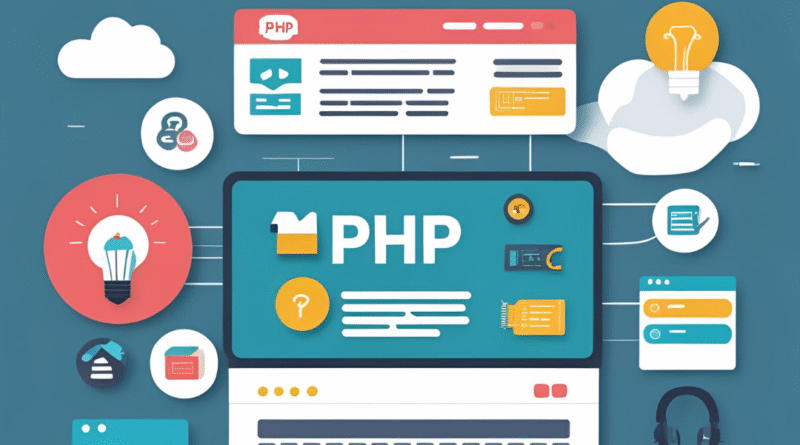PHP Sessions & Cookies:- Securing Your Website: A Deep Dive into PHP Sessions & Cookies for Authentication
Securing Your Website: A Deep Dive into PHP Sessions & Cookies for Authentication
In today’s digital landscape, a robust and secure login system is paramount for any website handling user data. But how do you keep track of who’s logged in and ensure their experience is seamless and protected? The answer lies in two fundamental PHP powerhouses: Sessions and Cookies.
This blog post will unravel the mysteries of PHP sessions and cookies, explaining how they work in harmony to create reliable authentication and login systems. We’ll explore their individual strengths, common use cases, and how to implement them securely, all while sprinkling in some key SEO terms to help others find this valuable information.
The Foundation: Understanding Authentication and Login
Before diving into the technicalities, let’s briefly define our core concepts. Authentication is the process of verifying a user’s identity – proving they are who they claim to be, typically through a username and password. A login system is the user interface and underlying logic that facilitates this authentication, allowing users to access restricted areas of your website.
Cookies: The User’s Memory Aid
Think of cookies as small text files stored on a user’s web browser. They are sent by the server with an HTTP response and then sent back to the server with subsequent requests. This client-side storage makes them ideal for remembering user preferences, tracking site activity, and, crucially, storing a unique identifier for session management.
Why are cookies important for login systems?
- Remember Me Functionality: Cookies are the backbone of “remember me” features, allowing users to stay logged in across browser sessions without re-entering credentials.
- Tracking User Activity (with consent!): While not directly for authentication, cookies can track Browse habits, which can be useful for personalizing user experiences (e.g., displaying recently viewed items).
- Session ID Storage: Most importantly for authentication, cookies are used to store a unique session ID. This ID acts as a key to retrieve a user’s session data from the server.
Sessions: The Server’s Secure Notebook
While cookies live on the client-side, PHP sessions operate on the server-side. When a user visits your website, PHP can start a session, creating a unique session ID. This ID is then typically stored in a cookie on the user’s browser. The actual session data (like a user’s login status, username, or shopping cart contents) is stored securely on the server.
Why are sessions critical for secure login systems?
- Security: Session data is stored on the server, making it much more secure than storing sensitive information directly in cookies, which can be easily manipulated on the client-side.
- State Management: HTTP is a stateless protocol, meaning each request from a browser is treated independently. Sessions allow your application to maintain “state” across multiple page requests, essential for tracking a logged-in user.
- User-Specific Data: Sessions are perfect for storing temporary, user-specific data that needs to persist throughout their visit to your website.
The Symphony: How Sessions and Cookies Work Together for Login
Here’s a simplified breakdown of how PHP sessions and cookies collaborate for a typical login process:
- User Enters Credentials: A user submits their username and password via a login form.
- Server Verification: Your PHP script receives these credentials and verifies them against your user database.
- Session Start: If the credentials are valid, PHP initiates a new session using
session_start(). This generates a unique session ID. - Cookie Creation: This session ID is then sent to the user’s browser, typically as a cookie (e.g.,
PHPSESSID). - Session Data Storage: On the server, you store relevant user information (e.g.,
$_SESSION['user_id'] = $user_id;,$_SESSION['logged_in'] = true;). - Subsequent Requests: With every subsequent request, the browser sends the session ID cookie back to the server.
- Session Data Retrieval: PHP uses this session ID to retrieve the corresponding session data from the server, allowing your application to know the user’s login status and access their personalized information.
- Logout: When a user logs out, you destroy the session data on the server (
session_destroy()) and typically delete the session ID cookie from the user’s browser.
Best Practices for Secure Login Systems
While powerful, sessions and cookies need to be handled with care to prevent security vulnerabilities.
- Always use HTTPS/SSL: Encrypt all communication between the client and server to prevent eavesdropping and data tampering. This is non-negotiable for any login system.
- Sanitize and Validate Input: Never trust user input. Always sanitize and validate all data submitted through login forms to prevent SQL injection and cross-site scripting (XSS) attacks.
- Strong Password Hashing: Never store plain-text passwords. Use strong, modern hashing algorithms like
password_hash()(Bcrypt) to secure user passwords. - Secure Cookie Flags:
HttpOnly: Prevents JavaScript from accessing the cookie, mitigating XSS attacks.Secure: Ensures the cookie is only sent over HTTPS.SameSite: Helps prevent Cross-Site Request Forgery (CSRF) attacks.
- Regenerate Session IDs: After a successful login, always regenerate the session ID (
session_regenerate_id(true);). This helps prevent session fixation attacks. - Set Session Timeouts: Implement appropriate session timeouts to automatically log out inactive users, reducing the risk of unauthorized access.
- Session Hijacking Prevention: Beyond
HttpOnlyandSecureflags, consider techniques like checking the user’s IP address or user agent string against the original session data (though this can have false positives).
Conclusion
PHP sessions and cookies are the bedrock of secure and efficient authentication and login systems. By understanding their individual roles and how they interact, you can build robust web applications that prioritize user security and a seamless experience. Remember to always prioritize security best practices, stay updated on the latest vulnerabilities, and continually refine your implementation. Your users’ trust depends on it!



